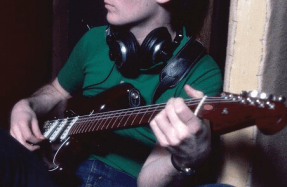Live Wires

THE ALLMAN BROTHERS BAND’S 1971 double album At Fillmore East is often and rightly proclaimed rock’s greatest live release. Fifty years on, it still sounds fresh, inspired and utterly original. It is the gold standard of blues-based rock and roll, but it’s easy to lose sight of what a radical album At Fillmore East really was.
It took a lot of guts for the Allmans and their record label to release a two-LP live album as their third release. After all, when it came out in July 1971, the band was something of a commercial flop. Although they drew raves for their marathon live shows that combined the Grateful Dead’s go-anywhere jam ethos with a far superior musical precision, their first two releases caused barely a ripple in the marketplace. The band’s self-titled 1969 debut sold fewer than 35,000 copies, and the following year’s Idlewild South did only marginally better despite two singles, “Midnight Rider” and “Revival.” The band struggled to understand why.
“WHEN IDLEWILD SOUTH DIED ON THE VINE, I THOUGHT, DAMN, MAYBE WE WERE WRONG ABOUT THIS GROUP”
— GREGG ALLMAN
“When the first record came out at number 200 with an anchor and dropped off the face of the earth, my brother and I did not get discouraged,” Gregg Allman recalled, a few years before his death in 2017. “But I thought Idlewild South was a much better record, and when that died on the vine, I thought, Damn, maybe we were wrong about this group.”
But the lackluster sales didn’t match the increasingly large and rabid crowds the band drew on its relentlessly paced tours. Fans loved the Allman Brothers’ rare combination of blues, jazz, rock and country, and their willingness to play until somebody pulled the plug. Finally, it dawned on the band and its management that a live album was the only way to capture the group’s real essence.
What resulted was a recording of two shows at New York City’s famed Fillmore East, an album that still stands as a testament to a great band at the peak of its power. Sadly, it would prove to be the final record completed by guitarist Duane Allman, who died shortly after its release. As such, it has become an epitaph for both him and the Allman Brothers Band Mach 1.
“That album captured the band in all their glory,” producer Tom Dowd said in a 1998 interview. Dowd, who died in 2002, was behind the boards for nearly a dozen Allman Brothers albums, including At Fillmore East, and worked with everyone from John Coltrane and Ray Charles to Cream and Lynyrd Skynyrd. “The Allmans have always had a perpetual swing sensation that is unique in rock. They swing like they’re playing jazz when they play things that are tangential to the blues, and even when they play heavy rock. They’re never vertical but always going forward, and it’s always a groove.”

Certainly, the improvisation and length of the tunes on was more similar to jazz than rock, with just seven songs spread over four vinyl sides, capturing the Allmans in all their bluesy, sonic fury. “You Don’t Love Me” and “Whipping Post” both occupied full album sides, while “In Memory of Elizabeth Reed” clocked in at 13 minutes. Still, from the clarion slide guitar of “Statesboro Blues” that opens the album to the booming timpani roll of “Whipping Post” that closes it, there is nary’s music.
You’re reading a preview, subscribe to read more.
Start your free 30 days





